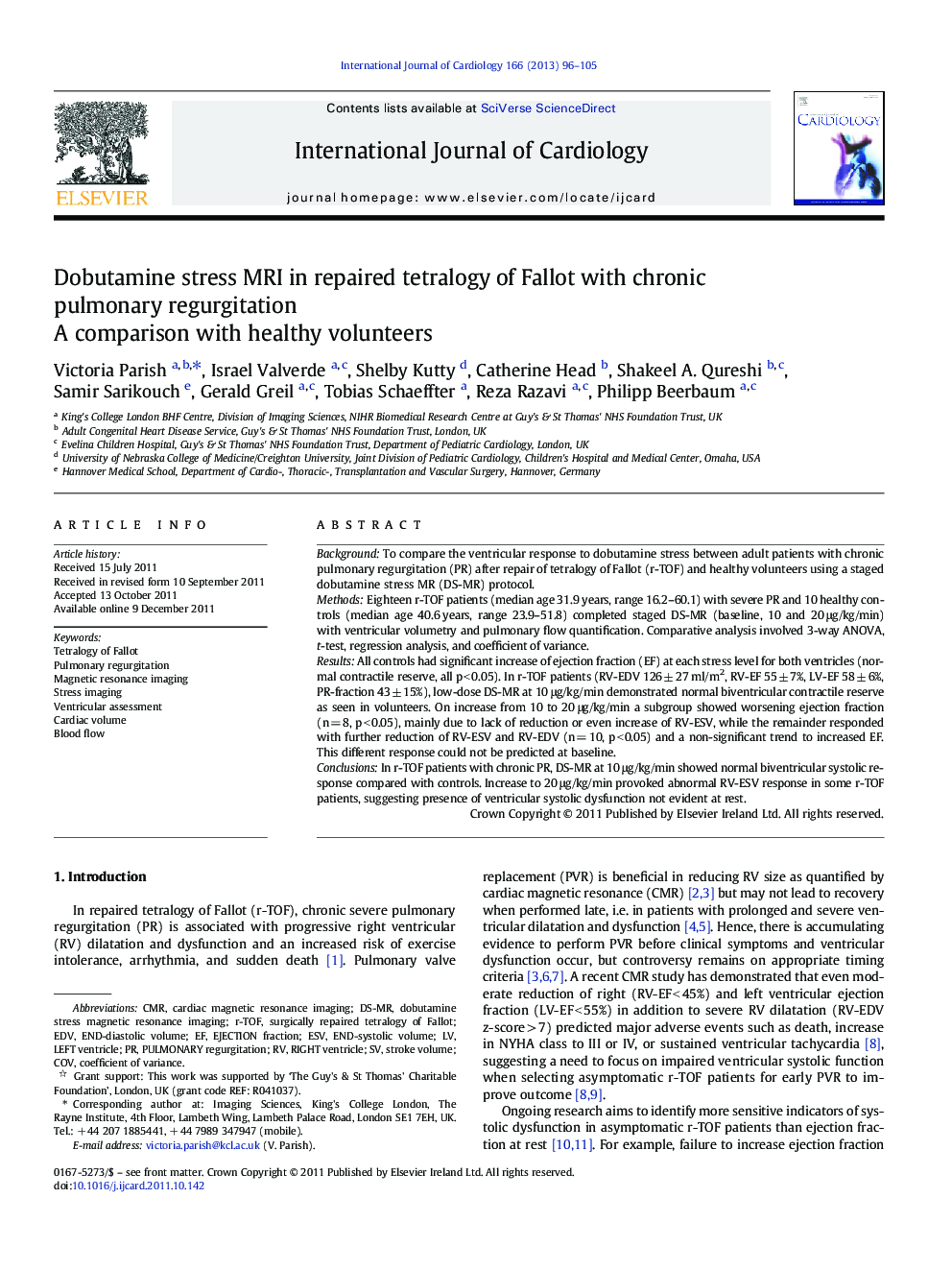| Article ID | Journal | Published Year | Pages | File Type |
|---|---|---|---|---|
| 5977378 | International Journal of Cardiology | 2013 | 10 Pages |
BackgroundTo compare the ventricular response to dobutamine stress between adult patients with chronic pulmonary regurgitation (PR) after repair of tetralogy of Fallot (r-TOF) and healthy volunteers using a staged dobutamine stress MR (DS-MR) protocol.MethodsEighteen r-TOF patients (median age 31.9 years, range 16.2-60.1) with severe PR and 10 healthy controls (median age 40.6 years, range 23.9-51.8) completed staged DS-MR (baseline, 10 and 20 μg/kg/min) with ventricular volumetry and pulmonary flow quantification. Comparative analysis involved 3-way ANOVA, t-test, regression analysis, and coefficient of variance.ResultsAll controls had significant increase of ejection fraction (EF) at each stress level for both ventricles (normal contractile reserve, all p < 0.05). In r-TOF patients (RV-EDV 126 ± 27 ml/m2, RV-EF 55 ± 7%, LV-EF 58 ± 6%, PR-fraction 43 ± 15%), low-dose DS-MR at 10 μg/kg/min demonstrated normal biventricular contractile reserve as seen in volunteers. On increase from 10 to 20 μg/kg/min a subgroup showed worsening ejection fraction (n = 8, p < 0.05), mainly due to lack of reduction or even increase of RV-ESV, while the remainder responded with further reduction of RV-ESV and RV-EDV (n = 10, p < 0.05) and a non-significant trend to increased EF. This different response could not be predicted at baseline.ConclusionsIn r-TOF patients with chronic PR, DS-MR at 10 μg/kg/min showed normal biventricular systolic response compared with controls. Increase to 20 μg/kg/min provoked abnormal RV-ESV response in some r-TOF patients, suggesting presence of ventricular systolic dysfunction not evident at rest.
